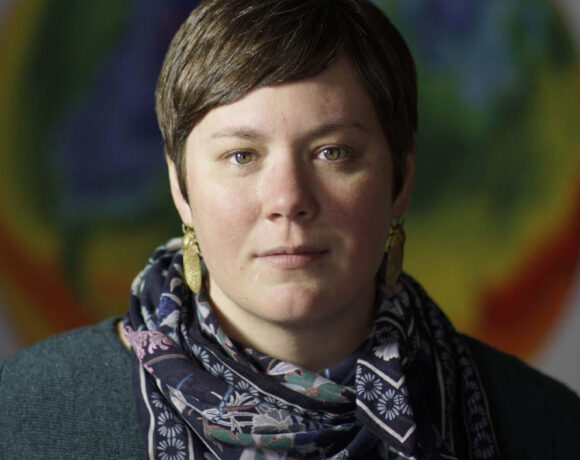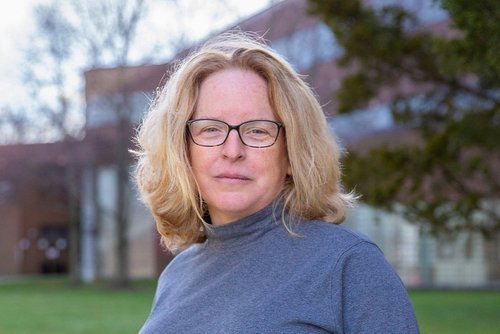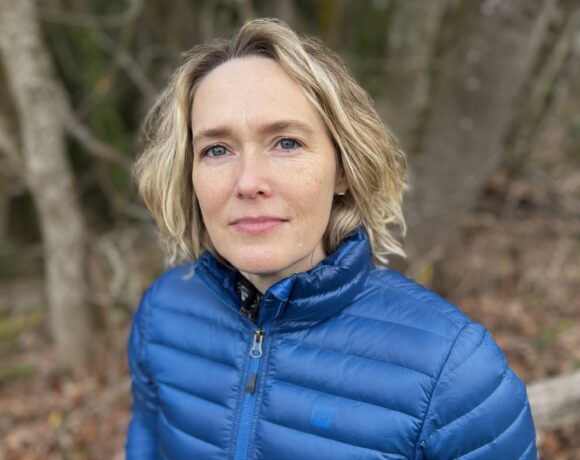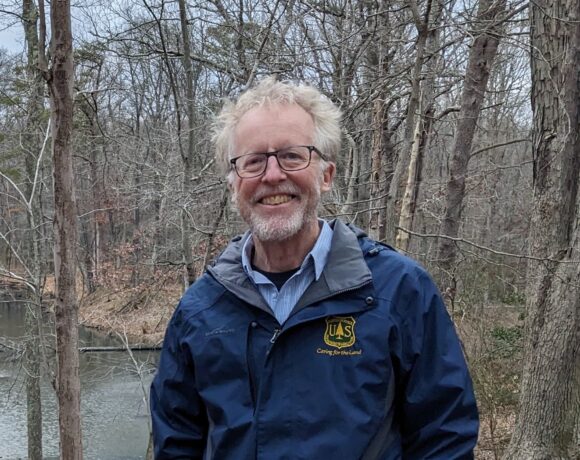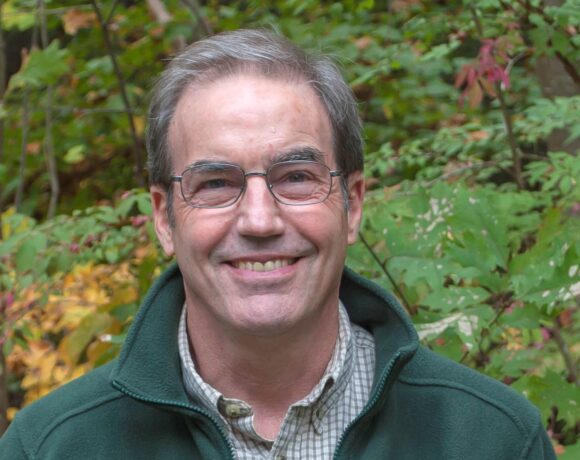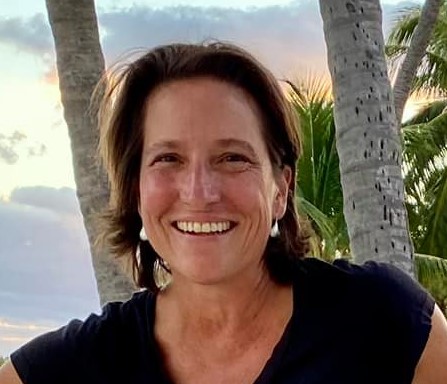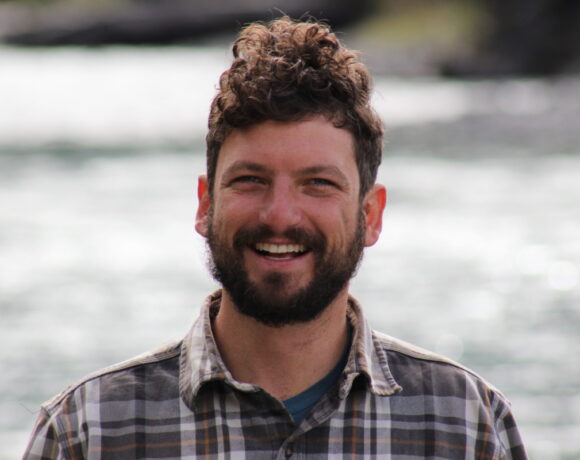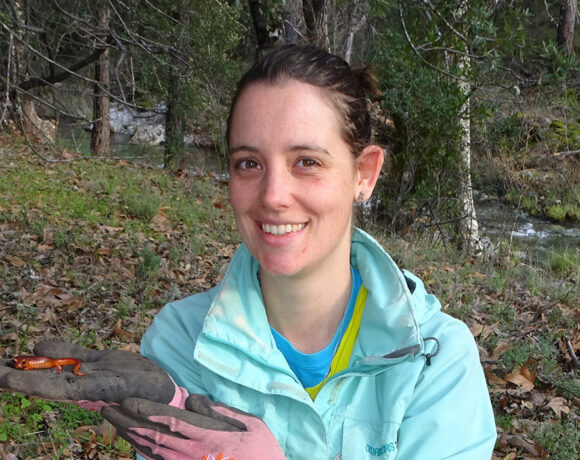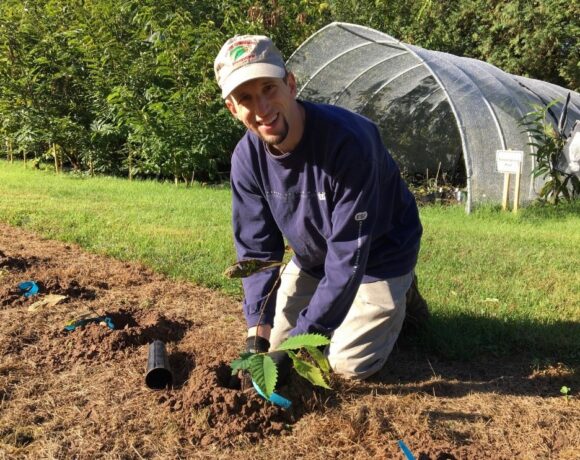This month, we hear from Dr. Jennifer Koch, who started her career pursuing med school, but ultimately found herself studying forest health. Her perspective from 32+ years of work and collaborations offer a glimmer of hope toward saving our native trees from high profile forest pests, like the Emerald Ash Borer (EAB).
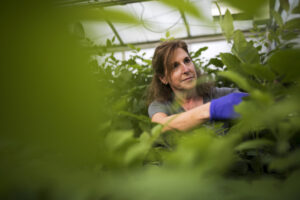
What kinds of research questions related to invasive species have you recently asked or are currently working on?
When EAB was first discovered in the U.S., reports of multiple species of ash dying led scientists to promote the hypothesis that our native tree species lack resistance to invasive insects and pathogens that they have not co-evolved with. But, when geneticists actually carefully look for resistance to invasive pests and diseases, in almost every case they have been able to find it. Our research has now shown that within our genetically diverse populations of native ash, we can identify trees with some resistance to EAB. The approach we are taking is to identify these often rare, but naturally occurring ash trees with resistance, develop tests that allow us to select and distinguish between resistant and susceptible individuals, and improve the level and frequency of resistance within a population through breeding. The ultimate goal is the development of genetically diverse seed orchards across the species range, that produce seed with improved EAB-resistance that have also captured enough regional genetic diversity to allow the resulting populations to survive new pests as they come along, and adapt to a changing climate.
What are the basic methods you are using to answer your research questions?
The Forest Service has a decades-long history of successfully breeding, producing and deploying populations with improved resistance to insects and diseases. We’re using these same traditional tree breeding approaches, while at the same time, doing research to develop methods to accelerate and improve upon the breeding process. We’re developing more efficient methods of propagation to allow rapid production of clonal copies of the most resistant trees, as well as methods to induce early flowering in trees to promote early and vigorous seed production. We also collaborate with numerous partners using genomics, transcriptomics and metabolomics with the goal of developing a rapid screening tool to identify resistant trees. The Forest Service programs that are currently actively deploying resistant material have successfully done so without using these technologies. Our challenge is the pace and scale at which EAB is killing our ash trees, threatening them with extinction. On the one hand, we don’t need to understand the specific underlying mechanisms responsible for EAB resistance in order to breed and produce EAB-resistant ash trees. On the other hand, hundreds of millions of trees have been lost and millions more are dying. Not only are we facing the potential extinction of five of our North American ash species, but research has shown that forest pests and pathogens, including EAB, are already reducing the capacity of forests to mitigate climate change. It is critically important that we figure out ways to accelerate the identification and conservation of these valuable trees and develop methods to rapidly produce improved seed sources for restoration.
What is the geographic range of your work? Where is your research ongoing?

Most of our work has been done on trees from lower southeastern Michigan and northwestern Ohio, near where EAB was first discovered in the United States. These areas are where we first saw very high levels of mortality that revealed trees we called “lingering ash,” which remained healthy after the rest of the ash trees had died. The scientists studying these populations found trees that didn’t fit their models; trees that should have been dead, but were alive and healthy. At this point, we have done genetic studies that show resistance to EAB is heritable, meaning it can be passed from parents to their progeny. By studying seedlings of lingering ash, we have also been able to show that we can produce seedling populations that, on average, have more resistance than the parent trees. These two findings provide proof of concept; that breeding for EAB-resistance is possible and is an important approach for saving our ash species. Given the time sensitivity of this issue, we’re working to build partnerships and expand the work. We have started the Great Lakes Basin Forest Health Collaborative, funded through the Great Lakes Restoration Initiative, to aid in expanding ash conservation, breeding and restoration within the Great Lakes Basin. We are just now getting started on a new project through a partnership with the Nature Conservancy, funded by the Manton Foundation, that will allow us further expand these efforts throughout the New England states as well as New York State. The long-term goal is to be develop genetically diverse and resistant green, white and black ash seed orchards throughout these regions to begin restoration and maintain ash as a component of healthy forests far into the future. Hopefully, our collaborative research partnerships will also lead to the development of tools to help decrease the time it takes to achieve this goal.
How does your research relate to the wider field of invasive species prevention and management? Are these tools that can be applied elsewhere and with other species?
We started working with beech and were able to prove that there is naturally occurring resistance to the scale insect (Cryptococcus fagisuga). We were then able to prove there is resistance to Emerald ash borer (Agrilus planipennis). Next, we’re going to tackle hemlock and Hemlock Woolly adelgid (Adelges tsugae).
We want our work with ash to provide a template that others can follow, beginning with identifying, preserving, and breeding resistant trees sooner rather than later.
In the past, resistance breeding has often been a last-ditch effort once everything else had failed. We want our work to demonstrate that, although genomics is not a requirement for successful breeding, when it’s used appropriately, it can actually increase the efficiency of breeding to meet the pace and scale of need. Breeding has a proven history of success and strong public support because it does not require genetic engineering (GMOs or transgenics), or the use of large amounts of chemicals. Breeding provides a natural solution; it is similar to natural selection, just with a little help from us. EAB kills so many trees, that the rare remaining resistant trees are so few and far between they won’t be able to cross-pollinate without intervention. We are simply finding the best trees and making sure they find each other to make that next generation. A colleague of mine actually coined the phrase “Tree Harmony” to describe what we do.
What is the most important thing about your research for stakeholders, managers, or policy makers to know?
Don’t assume resistance doesn’t exist! Using ash as an example, we encourage land owners to avoid preemptive removals of ash to allow EAB “screen” for resistance by revealing lingering ash trees. Obviously, we don’t want people keeping hazard trees, and in many cases the safest option is removal, but when possible, look for lingering ash and report them. They are the key to preservation of the species. Resistance does not equate to immunity. Lingering ash typically have partial resistance, and are still attacked by EAB, but are able to mount enough of a defense response to allow them to survive and remain healthier longer. Because they are still attacked, they are vulnerable, and may still die, which makes finding them an urgent need. Once we’ve lost these valuable sources of diverse, rare resistance mechanisms, they are gone for good. You can check with your state’s forest health agency about how to report lingering ash or you can report them through the Great Lakes Basin Forest Health Collaborative or even through cell phone apps that can be downloaded for free such as TreeSnap or Anecdata.
How did you get into this work? What’s your story and what was the path that you took to land where you are today?
In high school, I applied for a direct admit medical school program and I was accepted. I majored in biology and chemistry, and by the end of that experience, I was questioning if Medical School is what I really wanted. I was thinking more about research and ended up getting a PhD in Molecular Genetics at Ohio State University. I was a graduate student during the very beginning of the age of genomics and I started my career in medical research which, at that time, was a field that did not allow for work/life balance. Then I saw an advertisement for a position with the Forest Service doing research using biotechnology to develop baculoviruses as a way to control gypsy moth, and DNA is DNA, so the same skill sets used to study human genes are used to study genes in all living organisms, including insects and trees. I applied and started as a technician. Now, 32 years later, I have my own lab and I lead the invasive species team within our project. A few years into my new Forest Service career I had this ‘aha’ moment hiking through the woods in Ludington state park, Michigan, looking for resistant beech trees when I said to my colleague, “how cool is this that we’re actually getting paid to do this?!” It brought back so many memories of my childhood, playing in the woodlot in my backyard, making gardens out of moss and stones. I was given a 3-tiered plant stand for my birthday in third grade because I needed more space for all of the different house plants I used to propagate. At that moment, I realized this has been a huge part of me all along and I ended up in the career I was meant to have. Ironically, I now have a daughter who is currently a medical student and also loves plants.
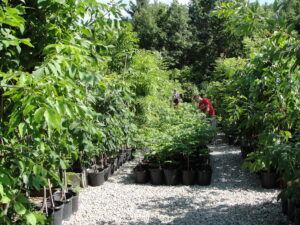
Reflecting on your 32+ years of experience in this field, what do you hope the long-term impact of your work will be?
I hope that before I retire, we see widespread breeding programs to have resilient and healthy forests, which I think are critically important to address climate issues as well as insect and disease issues. The legacy that I would like to leave behind is the development of networks of partners, working together to prevent the extinction of our North American ash species, retaining healthy ash as a component of our forests, to stand as a reminder that resistance breeding provides a proven solution to forest health issues so that when the next threat comes along, looking for resistance is a priority and not an afterthought.
Is there anything else you’d like to add or tell us about your work?
The other thing that I would love to see as part of my legacy is to encourage what we refer to as proactive breeding to mitigate the impacts of an invasive threat by producing and planting resistant trees in areas that have not yet even been attacked by the invader. For example, millions of acres of black ash dominant northern wetland forests are at risk of being permanently converted from forested land to swamp or marsh, a loss of forest cover we cannot afford at a time when the protection and restoration of forests are among our best tools to alleviate the impacts of climate change. EAB is only now reaching those areas, so we have started screening open-pollinated seed lots and have identified some resistant black ash trees, which gives us the opportunity to start producing resistant seedlings to supplement stands so once EAB begins killing the mature trees, the resistant seedlings can fill their place. Another example is Oregon ash: a species found only in CA, OR and WA. We are working with partners who are doing range-wide collections and establishing conservation plantings. We will be screening some of the seedlings from these collections to see if we can find any resistance and with any luck, we’ll be able to start breeding for EAB resistance before EAB ever makes it to these states.
Read a selection of her research here:
https://www.fs.usda.gov/treesearch/pubs/48578
https://www.fs.usda.gov/treesearch/pubs/55096
For more about Jennifer, check out:
https://www.science.org/content/article/can-ambitious-breeding-effort-save-north-america-s-ash-trees
Read more researcher spotlights:




